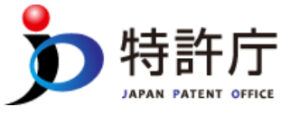Need to be an industrially usable design
If the design is not industrially usable (Article 3, Paragraph 1 of the Design Law), the application for design registration will be rejected as a design that cannot be used industrially (Article 3, Paragraph 1, Pillar of the Design Law).
What are industrially usable designs?
Designs that can be used industrially are stipulated in the Design Examination Standards.
In order to be recognized as an industrially usable design, all of the following requirements ①to ③ must be met.
① Must be a design under the Design Law
② The design is concrete
③ Must be a design that can be used industrially
① Must be a design under the Design Law
In order to be recognized as a design under the Design Law, all of the following requirements (1) to (4) must be met.
(1) It has an article property.
(2) The shape of the article itself.
(3) Have visibility.
(4) Have aesthetics.
(1) It has an article property.
Items subject to the Design Law are tangible items that are distributed in the market.
I. In principle, non-moving property
Land and its anchorage, so-called real estate, are not recognized as goods.
Items that are industrially mass-produced and treated as Hokkaido products at the time of sale, such as gates and assembled bungalows, are recognized as goods, even if they are real estate.
Ii. Other than solid
Intangible objects such as electricity, light, and heat are not recognized as goods.
Even if it is a tangible object, it is not recognized as an article if it does not have its own unique shape such as gas or liquid.
iii. A collection of powders and granules
Powders, granules, etc. are articles because the individual constituents are solid and have a certain shape, etc., but do not have a specific shape, etc. as an aggregate thereof. Is not accepted.
However, sugar cubes that have a fixed shape, etc., are accepted as articles.
iv. What is part of the article
Because something that cannot be separated without destroying the item, for example, the "sock heel" that is part of the "sock", is not by itself traded as an independent product under normal trading conditions. , Not recognized as an article.
However, even if it is a part of an article, it is recognized as an article if it is compatible and traded as an independent product under normal trading conditions.
(2) The shape of the article itself.
The shape, etc. of the article itself means the shape, etc. resulting from the characteristics or properties of the article, etc.
When the article is a cup-filled beverage, the latte in the cup with a pattern drawn on the surface by frothed milk and coffee is not the shape of the article itself.
(3) Have visibility.
Having visibility means something that can be recognized by the naked eye.
A unit of powder or granules that does not have visibility is applicable.
(4) Have aesthetics.
It is said that the aesthetics here do not require a noble beauty like a work of art, but anything that causes some kind of aesthetics is sufficient.
The following (1) and (2) are applicable as examples of things that do not have aesthetics.
(1) The main purpose is function and action, and it hardly causes aesthetics.
(2) A design that is uncoordinated and gives a complicated feeling but hardly causes a sense of beauty.
② The design is concrete
If there is a defect in the 6th drawing of the design registration application, the design will be regarded as not concrete.
For example, when the 6 views do not match each other.
③ Must be a design that can be used industrially
Being industrially usable means that the same product can be manufactured multiple times.
Examples of things that are not recognized as industrially usable are stones, which are natural objects, and works that belong to the field of pure art.










